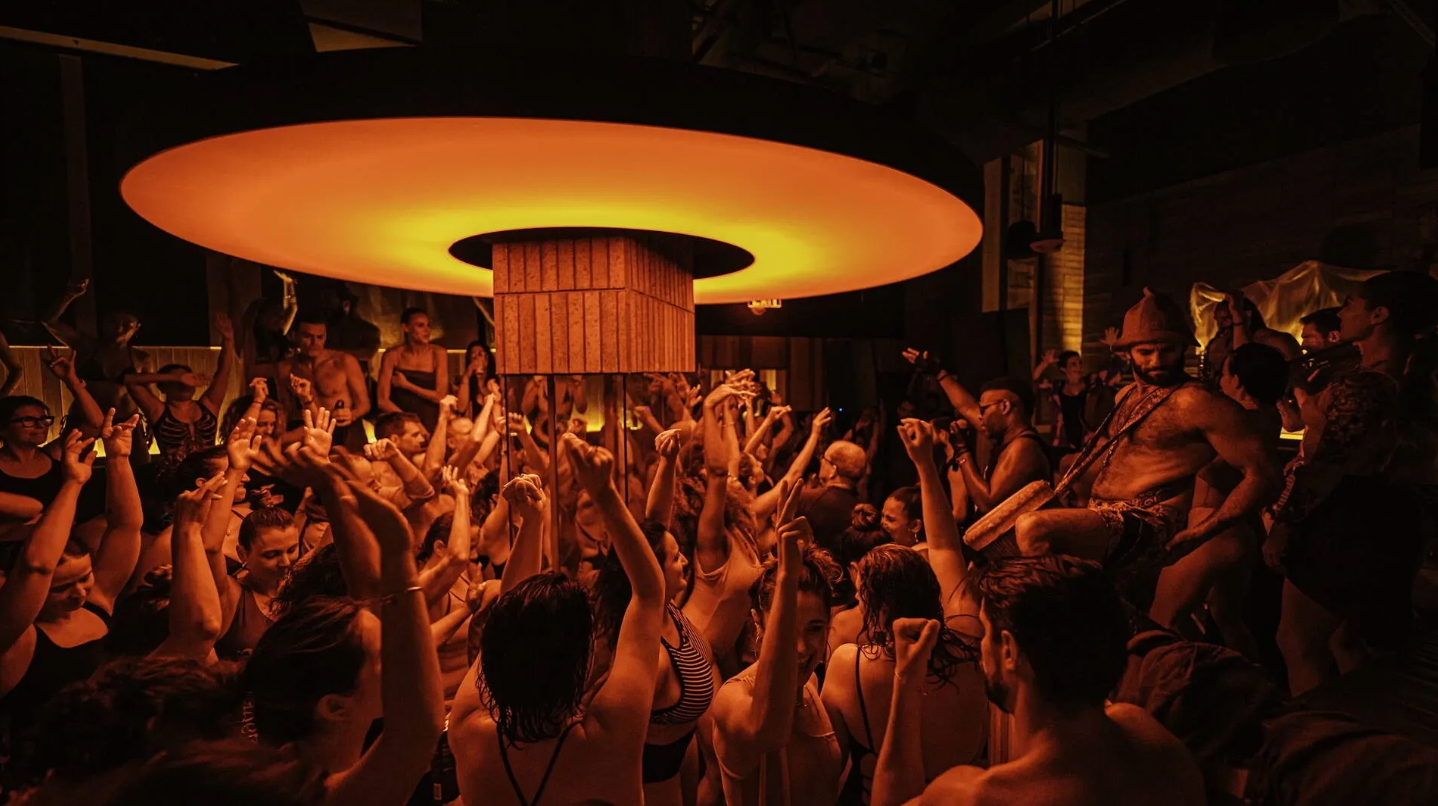The Social Wellness Revolution: When Connection Becomes the Cure

Photograph: Sasha Bianca | | Daybreaker
Photograph: Sasha Bianca | | Daybreaker
From Isolation to Intention
Let’s be honest about where we all are. We’re tired, not just physically exhausted, but socially depleted, which feels historically unique. With years spent glued to our screens, performing connection rather than experiencing it and to some degree we are still living in it; along with accumulating followers but not actually having real friends. The pandemic certainly accelerated this digital drift, with us holding the bill.
The irony is brutal; we are more connected than ever before, and yet we’re never felt more alone. We’ve optimised socialising into oblivion, prioritising efficiency over depth.
The same goes for the old wellness model, which was fundamentally solitary. Wellness, as I have known it, has always been a solo activity. Meditation apps for solo practice, home workout equipment, track your steps, monitor your heart rate; everything centred around optimising yourself in the privacy of your own existence.
For me at least, wellness has also been a personal project, health being an individual achievement that I can tick off my list. At times, it was the only source of dopamine to get me through the day.
The social wellness approach flips this entirely on its head; it actively positions individuals to gather together physically. Giving space for individuals to heal as a community, regulating our nervous systems through connection. As social creatures, isolation only weakens us as people, no matter how many supplements we take or how many minutes we meditate.
Trust me! I’ve got the t-shirt to prove it.
In recent years, we have witnessed a backlash against performative social media interactions. Social Wellness is grounded in what we might call “emotionally intelligent connection”, where interaction is prioritised over a polished performance; it’s about showing up authentically, not aesthetically.
We see this type of wellness with DayBreaker, who for the past 10 years, has built a community that holds sober daytime events across the globe, from sunrise yoga at the edge, to sauna rave, which includes sauna journeys, ice plunges accompanied by music that bring the community together.
For business and innovation, there is a huge opportunity in creating spaces, products and experiences that facilitate authentic connection. We are now in an age where the old model doesn’t work, you can’t slap the word community onto an existing product and call it wellness, it requires a genuine understanding of what people are actually hungry for, which is vulnerability, depth and a sense of belonging.
I once heard a woman say, “If you want community, you have to be a villager first, then you can create a village, because you understand the villagers’ needs".
For individuals like myself, we need to get uncomfortable because a real connection requires showing up, being seen, and being vulnerable. It isn’t easy, but for a community to thrive, it requires commitment and presence. The social wellness revolution demands something from us: our time, our attention and most importantly, our willingness to be imperfect in front of others.
The challenge about the social wellness market is that it could easily become just another thing to show social status or performance, where wellness experiences end up being Insta-ready but soul-empty, where communities are curated but not connecting and rituals that look good but feel hollow.
I often wonder how we maintain authenticity without turning connection into a product, making sure we don’t facilitate vulnerability into a culture that rewards performance, as we have seen time and time again. We often see communities built from demographically homogeneous groups who can afford boutique wellness experiences.
These are the questions I still think about when writing thought pieces like these, as there are underlying factors we must consider when talking about social wellness.
Who most benefits from these spaces? And how do we keep it inclusive? Maintaining social wellness at scale is always a challenge, but at what cost?
If social wellness becomes the priority when focusing on urban design and real estate, we may see homes with communal gathering spaces that support social wellness as its main objective; we see this with social hubs like &soul, which reimagine urban living by building soulful spaces for individuals to connect while experiencing activities that foster wellness.
We also see social wellness demonstrated with The Wellness Club, who focus more on inclusive as its approach to wellness by holding events and wellness discounts, to tackle London's loneliness epidemic, giving a space to individuals who need community.
Social wellness at its core should be focusing on community, where neighbourhoods are designed for serendipitous encounters and third spaces that aren’t just coffee shops or bars but genuine community hubs that reimagine the old framework of communal spaces.
I believe the social wellness market represents a cultural correction; it isn’t just nostalgia for some idealised past where everyone knew their neighbours. It’s something more interesting than that; It restructures how daily life is experienced. It’s using our understanding of psychology, neuroscience and public health to intentionally design social experiences humans actually need.
The only question is, are we brave enough to actually show up and trade some convenience for connection? Because the infrastructure is only valuable if we are willing to use it.
If we continue to scroll past it, say we are too tired, too busy or scared to connect, this has a negative impact on not just individuals but everyone as a whole.
I hope we choose differently this time, as I am choosing to do in my daily life, not only for myself but for the people who need me to be part of the village.
-Stephanie Ann-Marie
IF IT APPLIES- Founder